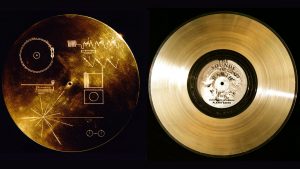For my 4th linking post, I’ve decided to link to Andrew Shedden’s Task 9, Network Assignment for the Golden Record Curation Data as we both approached this quite differently.
You can find Andrew’s Task 9 HERE, and my Task 9 HERE.
Summary
Andrew’s post began with a positive note on how he felt towards creating our own dataset for this task using Palladio, whereas I felt emotionally overwhelmed at first look. Andrew immediately began to analyze not the data itself, but rather who the data was coming from in his next three paragraphs, followed by his interpretation of the information, a few questions for the reader, and then a note about how he listened to the music choices. Unlike mine, there were no pictures of the Palladio nodes present in his post or notes about what data was presented to him.
Reflection
Upon first reading Andrew’s post, I was immediately drawn to the fact that he analyzed where the data was coming from – making some valid points as to the assumptions that were made. He spoke about how we are in a Graduate Program and that this means we have been in school for many years, competing numerous programs and receiving varying designations. He was curious if our educational backgrounds influenced the music that we chose for our records, asking, “If we were to ask a group of people who didn’t graduate high school, how would their answers differ? I think we would receive a number of different responses to this question, and it would all depend on when they didn’t graduate. If I asked my students today to listen to these songs, I believe they would only know a handful…maybe, but if you asked someone my father’s age, he might know many more, if not all of them. I think the timing would be a better question to make assumptions on.
Andrew then goes on to talk about economic factors wondering if people in poverty would select the same songs as those who were billionaires. This is an interesting thought as one could only assume that those in poverty have not had the opportunity to listen to any of these songs – which gets me thinking; they might be the closest group of people to those with whom this record was originally made for. I wonder what takeaways they would have from listening to these songs that they have never heard of…and depending on what part of the world they are from, they may have no idea about what sound a piano or flute makes…
What I found most interesting in Andrew’s post, was that although he recognizes that “we are an extremely varied group of people,” he doesn’t present any information from Palladio to showcase this. He goes on to talk about needing to look “at potential factors that could skew the data” but we can’t see any of the data that is present. This makes it difficult to understand what data, if any, is skewed. In my Task 9, I brought in 3 screenshots of the groupings that I spoke directly about in order to provide visuals for the readers to be able to interpret what I was talking about. I think that the lack of visuals in Andrew’s post negatively affects how the reader interprets the analysis of the data – because there is no data.
Furthermore, what was also interesting was that Andrew, near the end of his post, talked about how he had the “luxury of having a properly sound-treated studio” in order to listen to each of the songs, how they should be listened to. I wasn’t sure as to why this was necessary information to this particular task and made me think about how he wondered if our economic status would affect what song choices we made. He notes that regardless of this sound studio, he chose songs based on a pre-existing relationship – which answers his question for him.
Although Andrew and I took a completely different approach, both aesthetically and theoretically, I appreciated his initial analysis of the people for whom the data represents. I think it’s interesting that within his analysis he didn’t mention gender as something we know already, and I wonder if that’s because we cannot assume the gender of others, or if it wasn’t on his radar. There could be another reason of course, but it’s something to think about.
Finally, we did connect on one point, which is that we can only assume the reasons why people chose the songs they did and never really know for sure without further qualitative research. Palladio is an excellent visualization tool, depending on the results you’re looking to interpret.
Quote of the day:
During my journey of exploring Palladio, I had a revelation that it’s dangerous to feed my data into the machine and wait for it to spit out a beautiful-looking graph. It’s like a “black box”. And it is risky to blindly trust a black box. If we don’t understand what algorithm it uses, we won’t be able to correctly interpret the results. Hence in this post, I focused on a seeming no-brainer question-what a node size represents-and from there dig in this question and uncover its underlying algorithm. – Sarah Zhang




